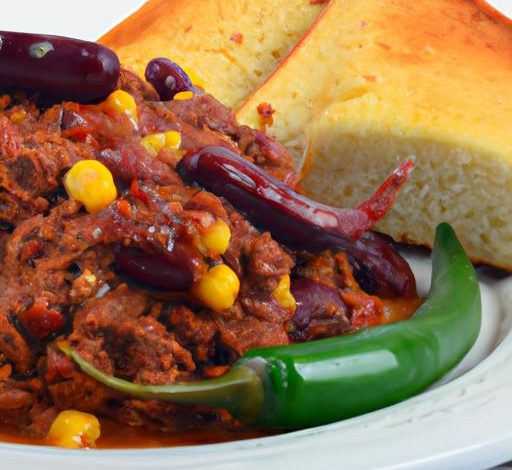Foods to Avoid with Diverticulitis: A Guide to Managing Symptoms through Diet

Introduction
Living with diverticulitis can be challenging, but with the right approach to diet, you can effectively manage its symptoms and improve your quality of life. In this article, I will provide you with valuable insights on the foods to avoid with diverticulitis, helping you navigate your dietary choices to alleviate discomfort and promote overall well-being.
Diverticulitis is a condition characterized by the inflammation or infection of small pouches, called diverticula, that form in the lining of the colon. These pouches often develop as a result of weakened areas in the colon wall. When they become inflamed or infected, it leads to diverticulitis, causing abdominal pain, bloating, constipation, and other discomforting symptoms.
Maintaining a proper diet is crucial for managing diverticulitis symptoms and preventing flare-ups. The foods we consume have a direct impact on our digestive system, and certain choices can aggravate the condition. By understanding which foods to avoid, you can reduce inflammation, ease symptoms, and promote healing.
It’s important to note that diverticulitis dietary recommendations may vary from person to person, so consulting with a healthcare professional or a registered dietitian is advised to receive personalized guidance. However, this article will serve as a valuable starting point to help you make informed choices when it comes to your diet and diverticulitis management.
So, let’s dive in and explore the foods you should steer clear of with diverticulitis, empowering you to take control of your health and well-being.
Understanding Diverticulitis
Diverticulitis is a condition that is closely linked to diverticulosis, a common condition where small pouches called diverticula form in the colon. While diverticulosis itself may not cause any noticeable symptoms, it can progress to diverticulitis if the diverticula become inflamed or infected.
Causes and Risk Factors
The exact cause of diverticulitis is not yet fully understood, but several factors can contribute to its development. A low-fiber diet is believed to play a significant role in the formation of diverticula. When we consume a diet low in fiber, our stools become harder and require more pressure to pass, leading to increased strain on the colon. Over time, this can weaken the colon walls and contribute to the formation of diverticula.
Other risk factors for developing diverticulitis include age, with the condition being more common in individuals over the age of 40, and genetic predisposition. Obesity, smoking, lack of physical activity, and certain medications such as nonsteroidal anti-inflammatory drugs (NSAIDs) may also increase the risk.
Common Symptoms of Diverticulitis
Individuals with diverticulitis may experience a range of symptoms, which can vary in severity. The most common symptoms include:
-
Abdominal Pain: The most prominent symptom of diverticulitis is abdominal pain, usually located in the lower left side. The pain may be constant or intermittent and can range from mild to severe.
-
Bloating and Gas: Diverticulitis can cause bloating and increased gas production, leading to discomfort and a feeling of fullness in the abdomen.
-
Changes in Bowel Habits: Fluctuations in bowel movements are common with diverticulitis. This can include constipation, diarrhea, or a combination of both.
-
Fever: In some cases, diverticulitis can cause a low-grade fever, indicating an infection in the diverticula.
It’s important to note that these symptoms can mimic other conditions, such as irritable bowel syndrome or inflammatory bowel disease. Therefore, it is crucial to consult with a healthcare professional for an accurate diagnosis and appropriate treatment.
Now that we have a better understanding of diverticulitis, let’s explore how making dietary changes can help manage its symptoms effectively.
Importance of Diet in Diverticulitis Management
Role of Diet in Preventing Diverticulitis Flare-ups
When it comes to managing diverticulitis, diet plays a crucial role in preventing flare-ups and promoting overall gastrointestinal health. The foods we consume directly impact the condition of our digestive system, and making mindful choices can significantly improve diverticulitis symptoms.
Significance of Avoiding Certain Foods to Alleviate Symptoms
Avoiding certain foods is essential in alleviating the symptoms of diverticulitis. The condition is often triggered by foods that are difficult to digest or that can irritate the inflamed diverticula. By identifying and eliminating these problematic foods from your diet, you can reduce inflammation, pain, and discomfort.
1. High-Fiber Foods to Limit or Avoid: While fiber is generally beneficial for digestive health, it can be problematic during diverticulitis flare-ups. High-fiber foods, such as whole grains, nuts, seeds, and certain fruits and vegetables, can be difficult to digest and may worsen symptoms. It is advisable to limit or avoid these foods temporarily until your symptoms subside.
2. Specific Foods that May Exacerbate Diverticulitis Symptoms: Certain foods have been observed to trigger diverticulitis symptoms in some individuals. These include spicy foods, alcohol, caffeine, and foods high in fat or sugar. It is important to pay attention to your body’s response to these foods and make adjustments accordingly.
Benefits of Consuming a Healthy and Balanced Diet
Maintaining a healthy and balanced diet is not only crucial for overall well-being but also plays a significant role in managing diverticulitis. By incorporating the right nutrients, you can support your body’s healing process, boost your immune system, and promote optimal digestive health. Opt for a diet rich in fruits, vegetables, lean proteins, and whole grains to provide your body with the essential vitamins, minerals, and fiber it needs to stay healthy.
Remember, while avoiding certain foods is important, it is equally essential to focus on what you can eat. Building a well-rounded diet that includes foods that are gentle on the digestive system can help alleviate symptoms and promote healing during diverticulitis flare-ups.
In the next section, we will delve deeper into the specific foods to avoid with diverticulitis, enabling you to make informed choices that support your well-being.
Foods to Avoid with Diverticulitis
Living with diverticulitis means being mindful of the foods you consume, as certain choices can trigger symptoms and exacerbate the condition. Here, we will explore the types of foods that should be avoided to manage diverticulitis effectively.
Explanation of how certain foods can trigger diverticulitis symptoms
Certain foods can irritate the inflamed or infected diverticula, leading to increased discomfort and potential flare-ups. Understanding how these foods can trigger symptoms is crucial for making informed dietary choices. Foods that are high in fiber, for example, can be challenging for the digestive system to process during a flare-up, potentially worsening symptoms.
High-fiber foods to limit or avoid
While a high-fiber diet is generally recommended for maintaining digestive health, during a diverticulitis flare-up, it’s important to limit the intake of high-fiber foods. These include whole grains, nuts, seeds, and certain fruits and vegetables with tough skins or seeds. These foods can be difficult to digest and may cause further irritation to the inflamed diverticula.
Specific foods that may exacerbate diverticulitis symptoms
In addition to high-fiber foods, there are specific items that can exacerbate diverticulitis symptoms and should be avoided. Spicy foods, such as chili peppers and hot sauces, can irritate the digestive system and potentially trigger flare-ups. Additionally, foods that are difficult to chew or have small, hard pieces, like popcorn or nuts, can increase the risk of diverticula becoming inflamed or infected.
Importance of avoiding processed and fried foods
Processed and fried foods should also be avoided when managing diverticulitis. These foods are often high in unhealthy fats, sodium, and additives, which can contribute to inflammation and digestive distress. Opting for whole, unprocessed foods is a healthier choice that aids in diverticulitis management.
By being mindful of the foods you consume and avoiding those that can worsen symptoms, you can effectively manage diverticulitis and promote a healthier digestive system. Remember, it is essential to consult with a healthcare professional or a registered dietitian to receive personalized dietary recommendations based on your specific needs and condition.
Alternative Food Choices for Diverticulitis
Introduction to Low-Fiber Diet Options during Flare-ups
During diverticulitis flare-ups, it is essential to transition to a low-fiber diet to give your digestive system a break and reduce inflammation. Low-fiber foods are easier to digest, minimizing strain on the colon and providing relief from symptoms. However, it is important to note that a low-fiber diet should only be followed temporarily and under the guidance of a healthcare professional.
Soft and Easily Digestible Foods Recommended for Diverticulitis Patients
When dealing with diverticulitis, incorporating soft and easily digestible foods into your diet can help soothe your digestive system. These foods provide the necessary nutrients while being gentle on the inflamed areas. Opt for well-cooked vegetables, tender meats, and softer grains to minimize discomfort.
Examples of Foods that are Gentle on the Digestive System
-
Cooked Vegetables: Steamed or boiled vegetables like carrots, squash, and spinach are easier to digest than raw vegetables. These provide essential vitamins and minerals without causing irritation.
-
Lean Proteins: Tender and lean meat options such as chicken, turkey, and fish are excellent sources of protein that are gentle on the digestive system. Be sure to cook them thoroughly and avoid adding excessive spices or seasonings.
-
Refined Grains: White rice, white bread, and pasta made from refined grains are easier to digest compared to whole grains. These can be included in your diet during flare-ups to provide energy and fiber in a more digestible form.
-
Low-Fiber Fruits: When experiencing diverticulitis symptoms, opt for low-fiber fruits such as bananas, melons, and peaches. These fruits are less likely to cause discomfort and are rich in essential vitamins and minerals.
Remember, these food choices are temporary measures to help manage diverticulitis symptoms during flare-ups. It is crucial to gradually reintroduce high-fiber foods back into your diet once flare-ups subside, as fiber plays a vital role in maintaining a healthy digestive system.
By incorporating these alternative food choices into your diet, you can provide your body with the nutrients it needs while minimizing discomfort and promoting healing. However, it is advisable to consult with a healthcare professional or registered dietitian to create a personalized meal plan that suits your specific needs and condition.
Conclusion
In conclusion, understanding the importance of a proper diet when managing diverticulitis is crucial for alleviating symptoms and preventing flare-ups. By avoiding certain trigger foods and embracing a diverticulitis-friendly diet, you can significantly improve your quality of life. Remember to consult with a healthcare professional or registered dietitian to receive personalized dietary recommendations tailored to your specific needs.
Maintaining a healthy and balanced diet, rich in fiber, is essential for managing diverticulitis. While high-fiber foods are generally recommended to promote digestive health, during flare-ups, opting for a low-fiber diet with soft and easily digestible foods is preferred. Avoiding processed and fried foods, as well as specific trigger foods, can help alleviate discomfort and reduce the risk of complications.
By making mindful choices and being aware of the impact of different foods on your condition, you can take control of your diverticulitis journey. With time, patience, and a well-planned diet, you can effectively manage your symptoms and improve your overall well-being.
Remember, the road to managing diverticulitis is unique to each individual, and what works for one person may not work for another. It’s important to listen to your body, keep a food diary to track your triggers, and maintain open communication with your healthcare team.
So, embrace a diverticulitis-friendly diet, make informed choices, and embark on a journey towards a healthier and more comfortable life. You have the power to control your symptoms and live your life to the fullest, starting with the foods you choose to nourish your body.
Together, let’s navigate the world of diverticulitis and empower ourselves to make the right dietary choices. Here’s to a happier, healthier you!
Conclusion: So above is the Foods to Avoid with Diverticulitis: A Guide to Managing Symptoms through Diet article. Hopefully with this article you can help you in life, always follow and read our good articles on the website: Asian Wallpaper




